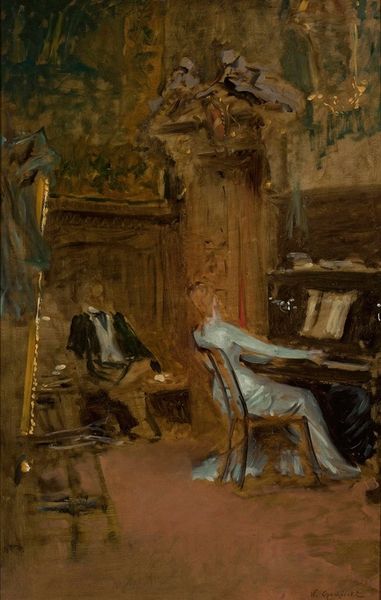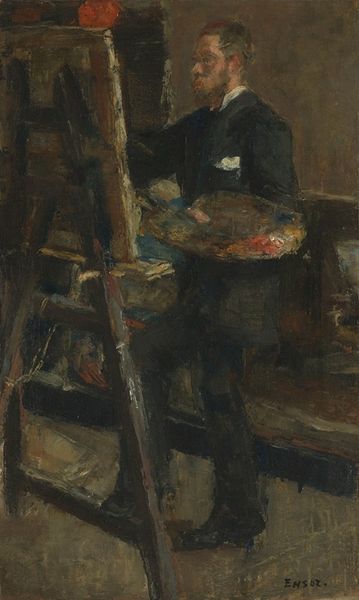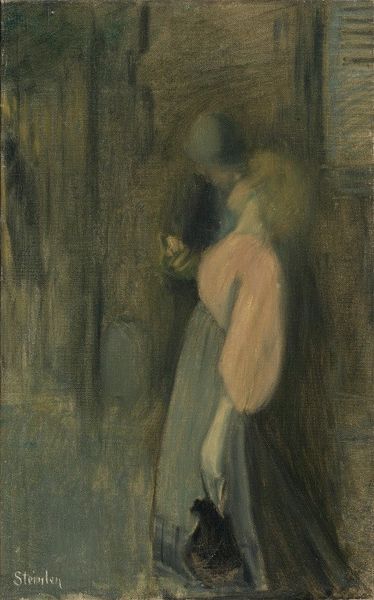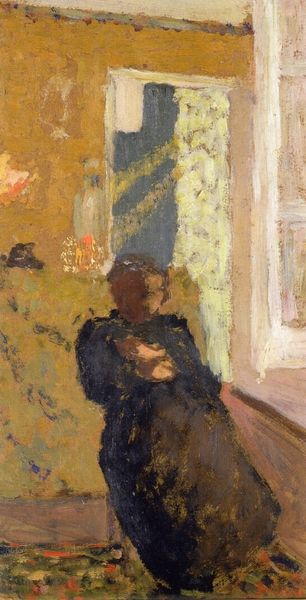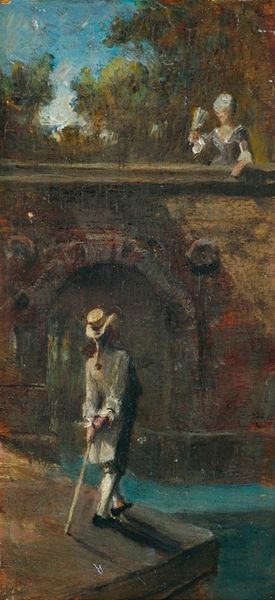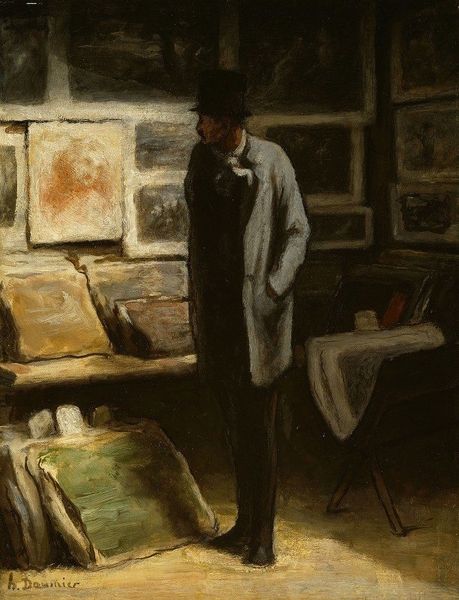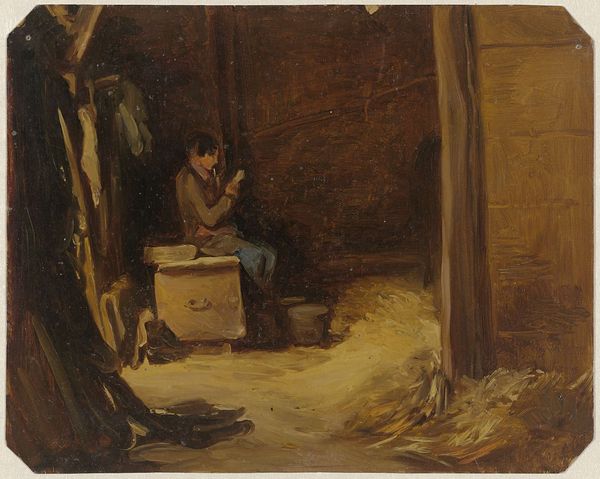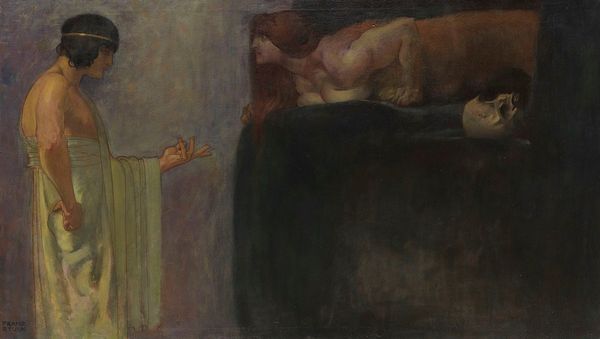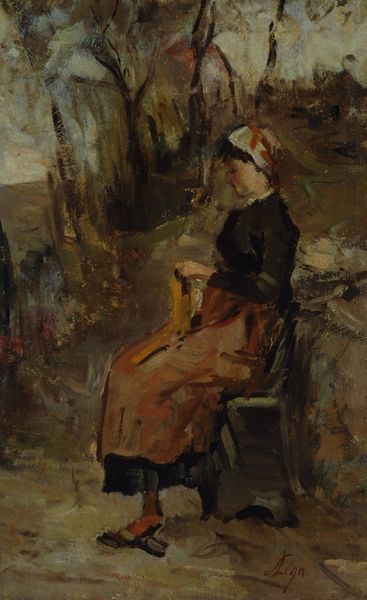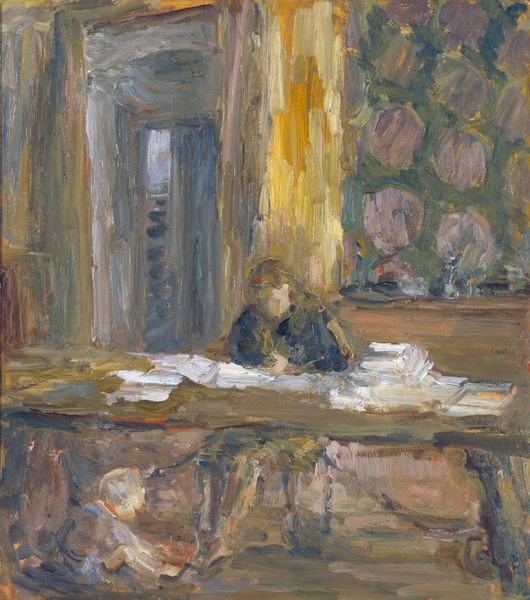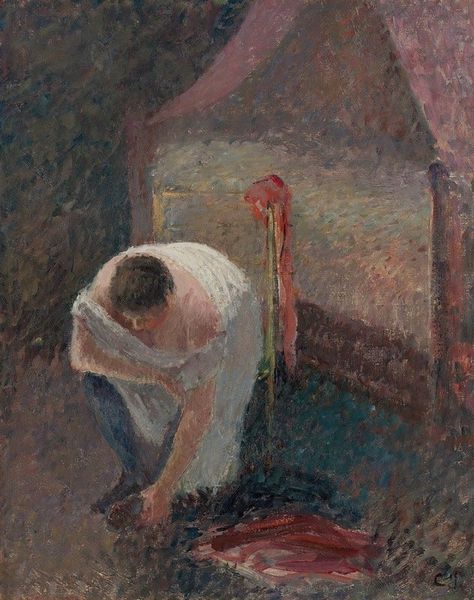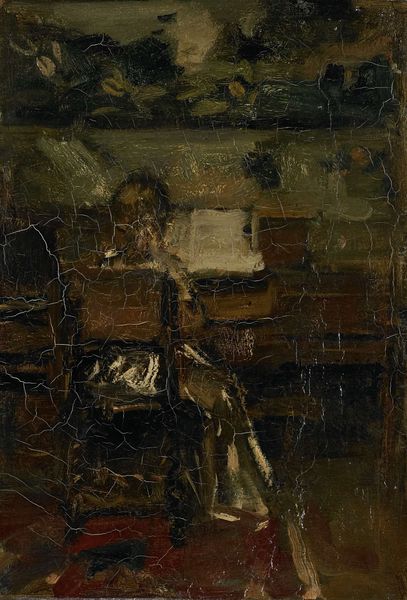
oil-paint
#
portrait
#
oil-paint
#
figuration
#
oil painting
#
expressionism
#
genre-painting
Copyright: Public Domain: Artvee
Editor: This is Karl Wiener’s "Kummer," painted around 1930 using oil paint. The scene has this heavy, almost claustrophobic atmosphere. It makes you wonder about the story behind the solitary figure. What kind of societal pressures were Wiener responding to, do you think? Curator: It's important to situate this work within the Weimar Republic. Wiener, as an Expressionist, likely channeled the social anxieties and economic uncertainties of that era. The figure's posture, leaning against the wall, the dark palette – these evoke feelings of alienation and despair that were widespread. Do you see how the interior, seemingly bare and undefined, contributes to that feeling? Editor: Absolutely. The emptiness of the room intensifies the sense of isolation. The lighting almost feels theatrical. Did Wiener intend to critique something specific in society? Curator: Precisely. Expressionist art often serves as social commentary. Wiener might have been critiquing the marginalization of women, the societal pressures, or perhaps even alluding to the hidden struggles within the burgeoning urban environments. How might contemporary audiences receive such an image? Editor: Today, I think people might see a connection to mental health awareness, the pervasive loneliness that can exist even amidst large populations, especially online. I wonder, though, if we project too much of our current understanding onto it. Curator: That's a crucial point. Historical context matters. The 'Kummer' of 1930s Vienna is not the same as the loneliness of today, though resonances certainly exist. Studying the political climate and artistic circles of the time gives us a richer, fuller appreciation of its original impact. Editor: It makes me think about how artworks can function almost like time capsules, holding echoes of past anxieties that still speak to us now, albeit in different ways. Thank you for making that connection. Curator: My pleasure. It reminds us that art engages with, and also shapes, our understanding of the world around us.
Comments
No comments
Be the first to comment and join the conversation on the ultimate creative platform.
